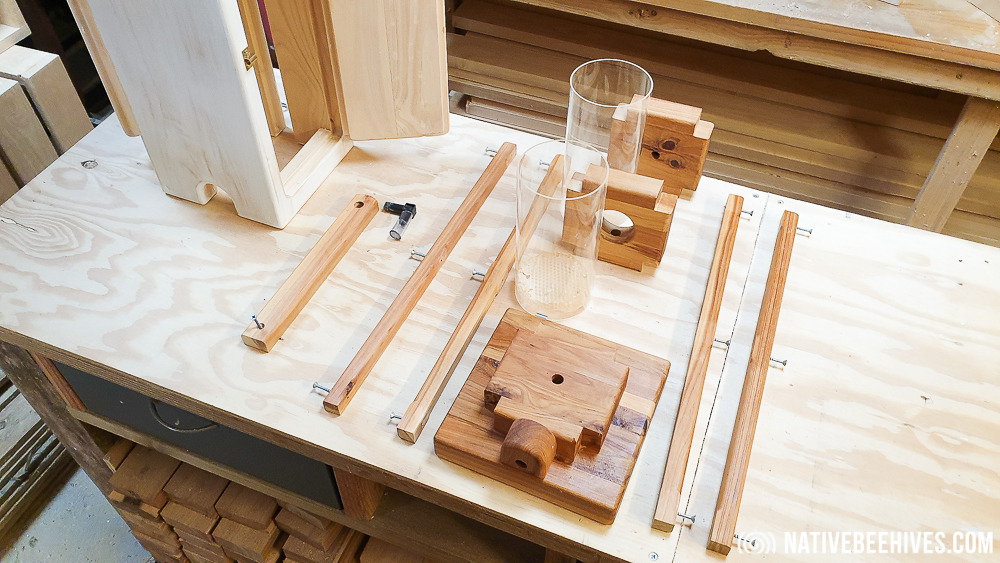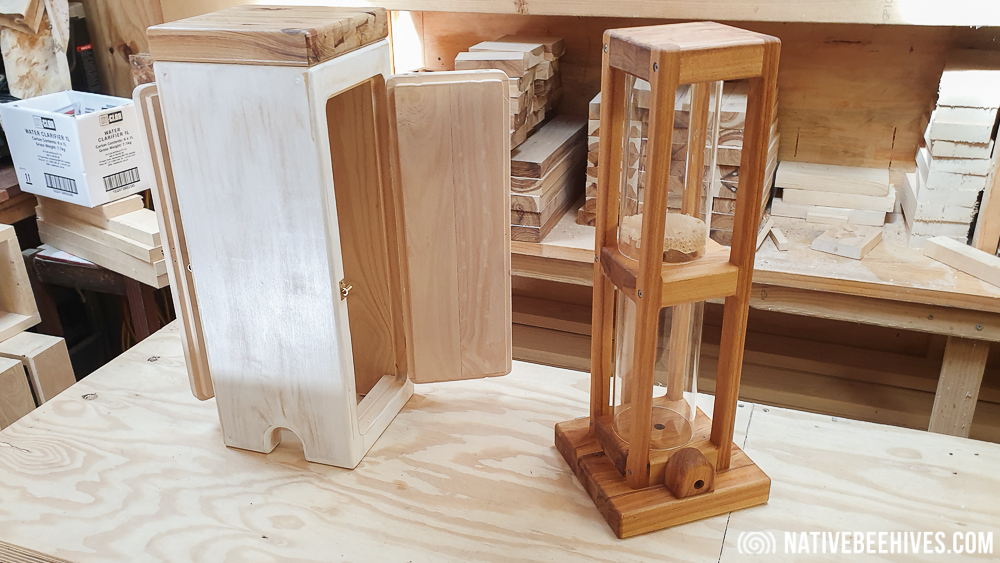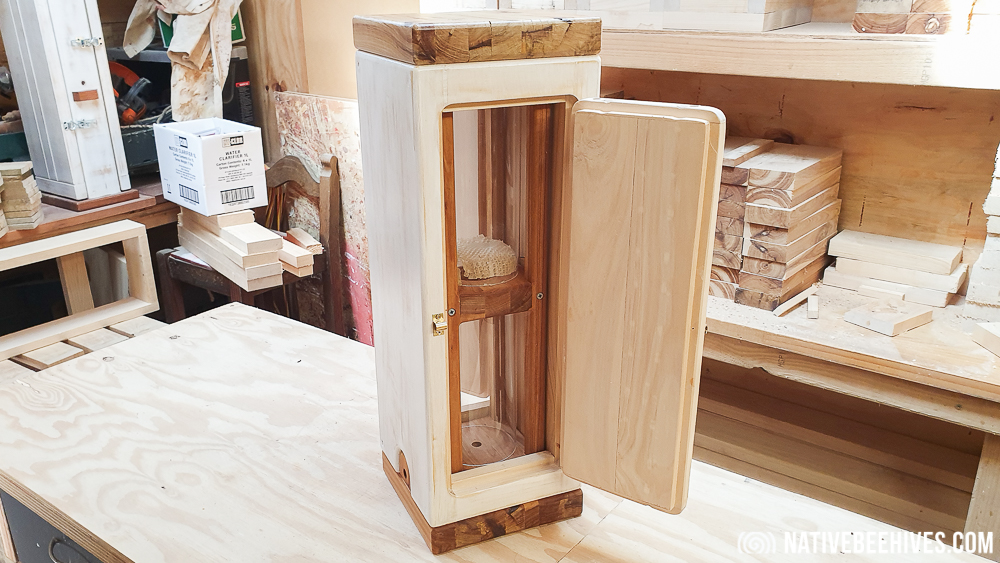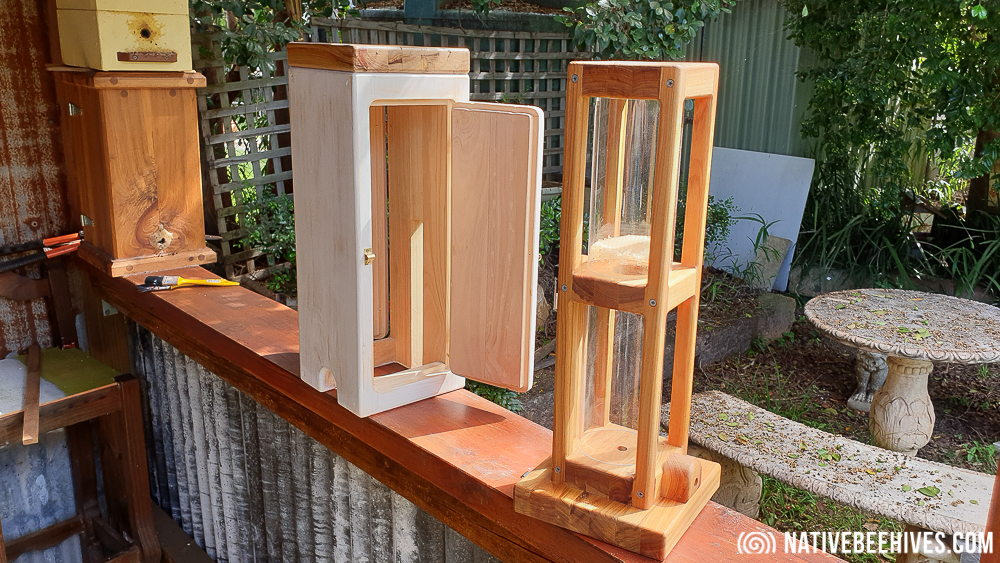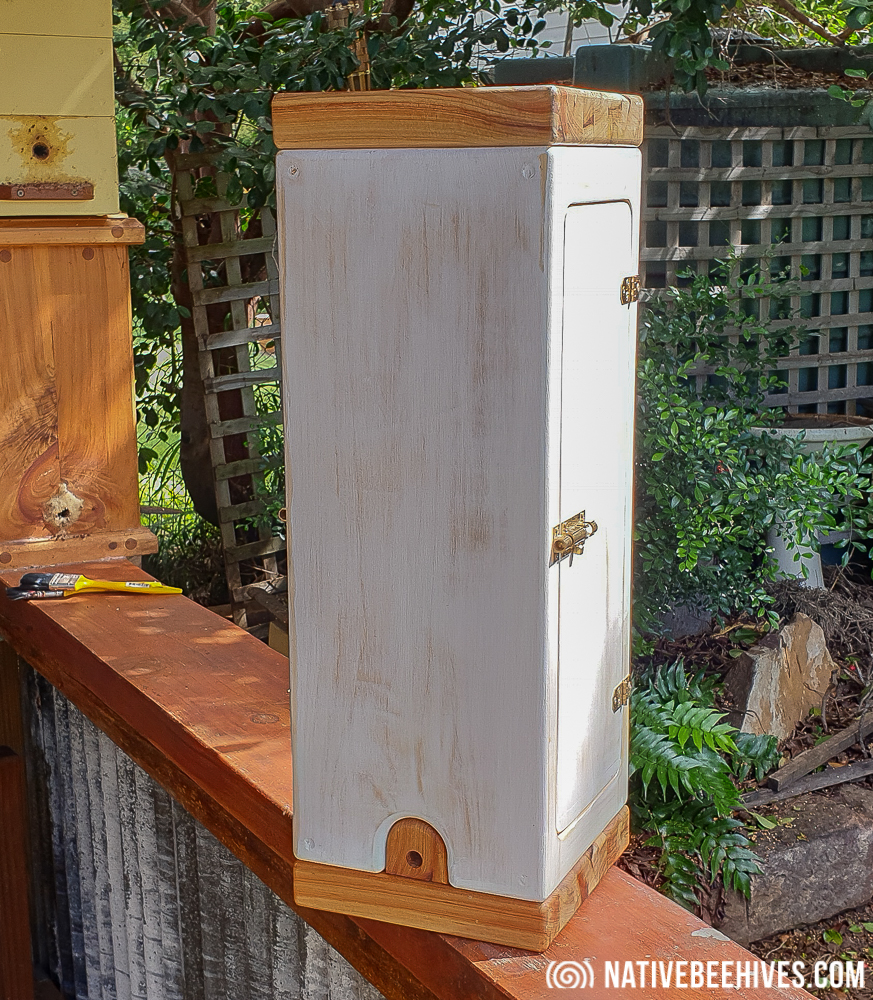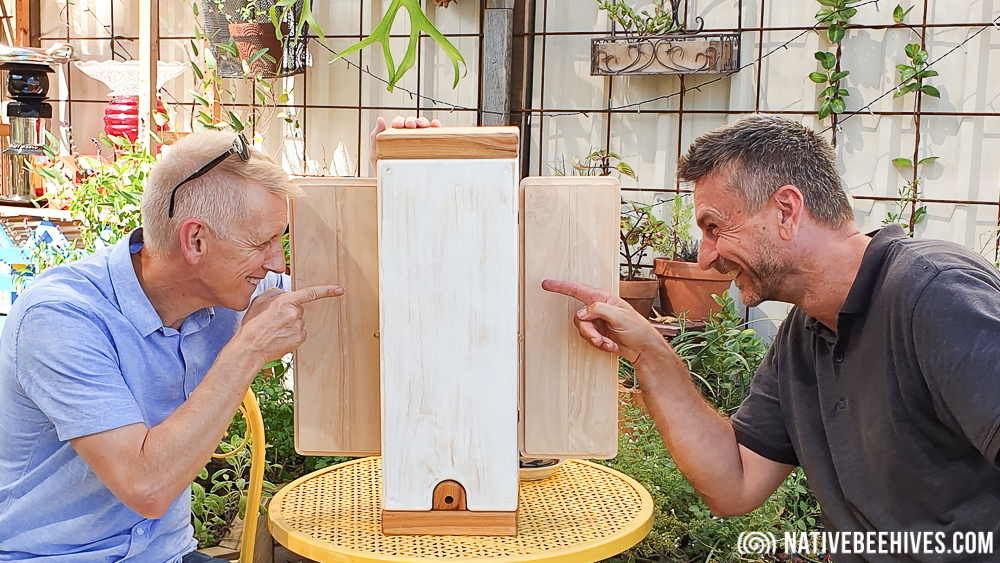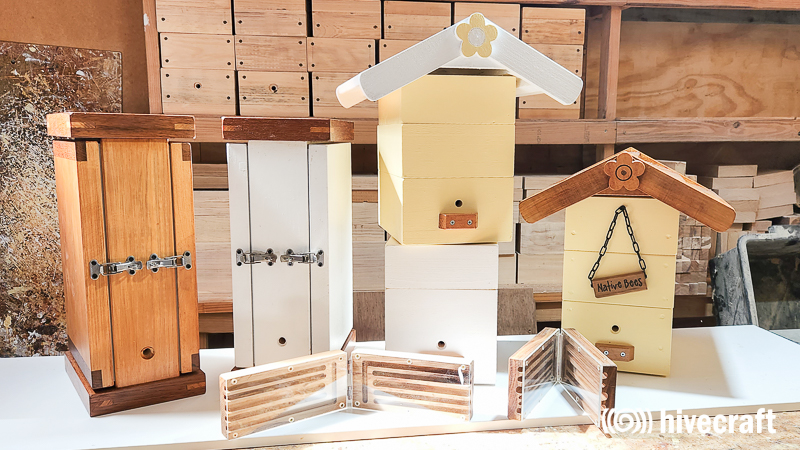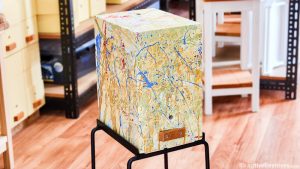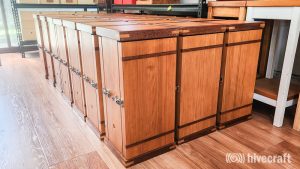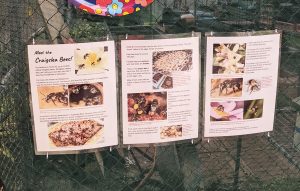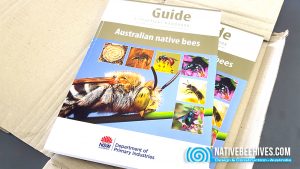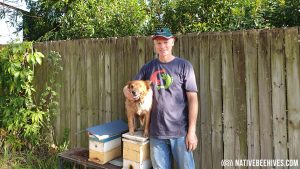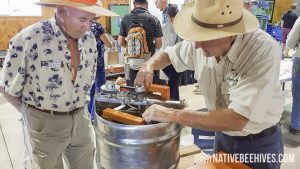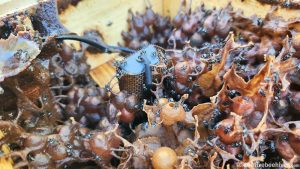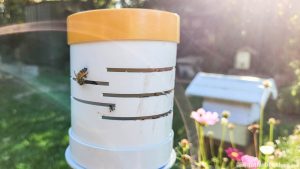Hour Glass Observation Hive
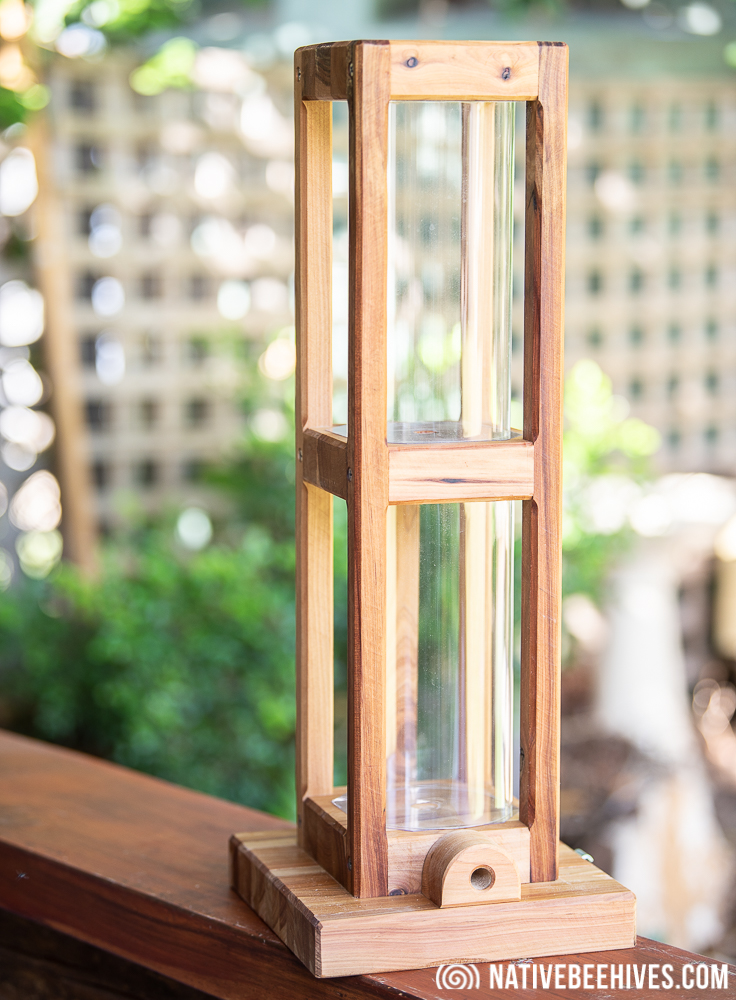
The idea
This started with an email from Brian Keeble
“So it got me thinking, we could attempt a Perspex cylinder…..
Then I thought, to make things easier, we could have the rectangular exterior made of wood and the Perspex cylinder slips in and out of it?” – Brian
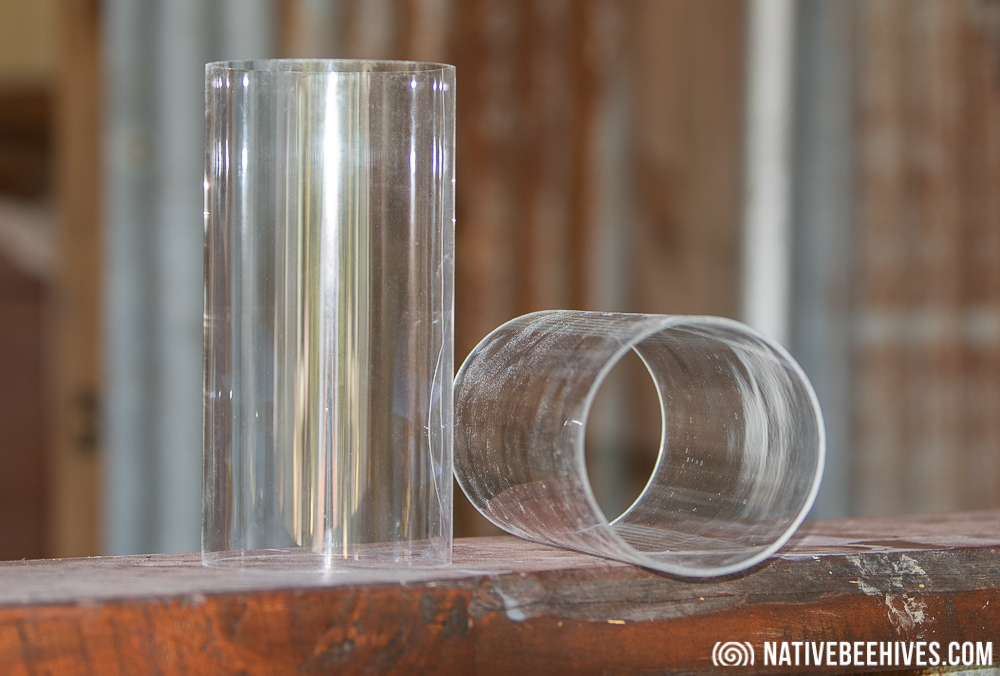
The Design
A few ideas were thrown back and forth and Brian gave me the clear cylinders he purchased. Each cylinder is 1.5 litres in volume, so we figured you might want the volume of two cylinders to accommodate a colony.
Each cylinder is separated by a layer of wood. This allows all the access points and connecting tunnels to be constructed in the wood and not drilling holes in the perspex which might get messy.
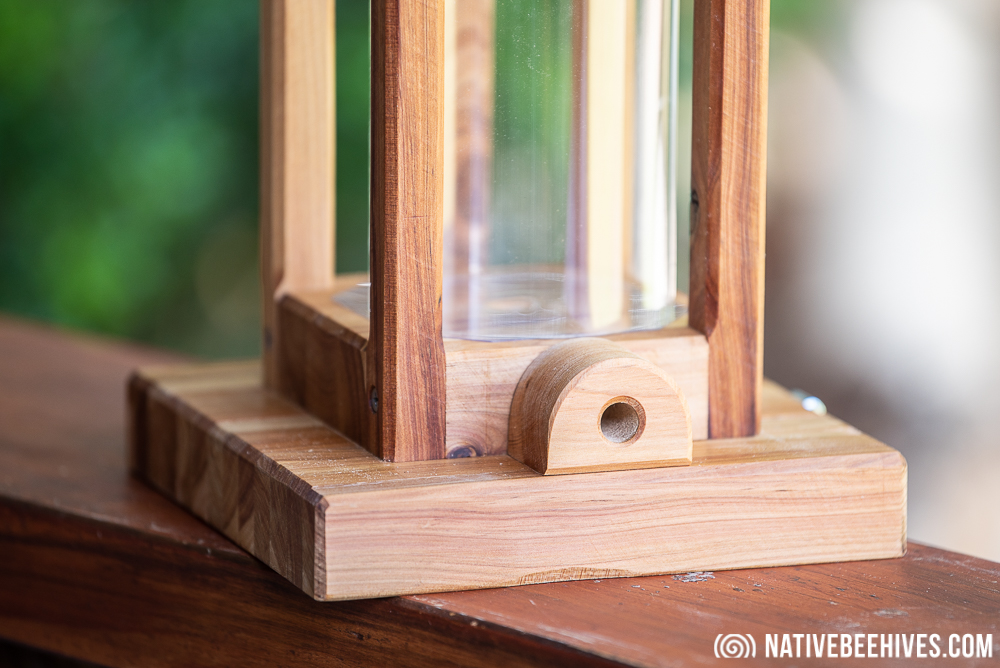
The bottom wood layer has the entrance hole in the front that connects to a vertical tunnel that emerges in the center of the cylinder.
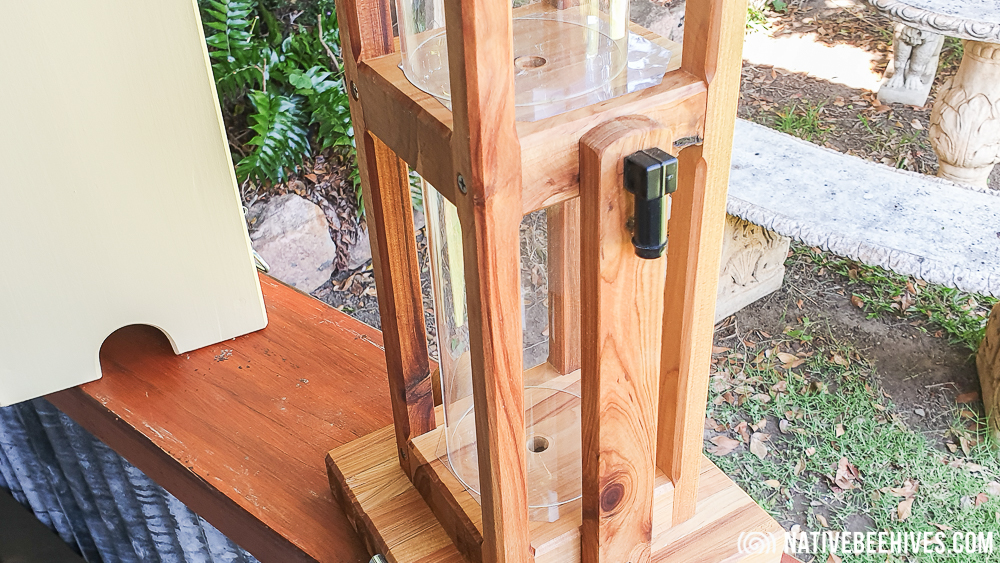
The middle layer of wood has a hole straight through vertically so the bees can access the top cylinder from the bottom cylinder. There’s also a entrance hole in the back of the middle layer where it can be connected for Budding/Eduction or used as a vent.
The top layer of wood also has a vent. This is covered with some mesh.
Re-usable
Most observation boxes will be one use only and once the colony is fully established it can be hard to see much. Part of the fun or interest in an observation box is to watch the new colonies progress from the early stages. If you want to leave the established colony in the cylinders that’s one option. Another option is to remove the full cylinders and place a new fresh empty cylinder in and start again. You could swap out both tubes or just one, the honey super or brood chamber. Each cylinder is capped at each end with a thin clear sheet so the cylinder can be removed easily.
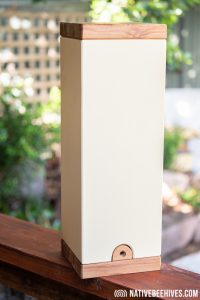
The Cover
An observation hive is usually just thin clear material like perspex or glass that doesn’t provide much insulation at all so every observation hive has to also have an outside insulating or protective cover. This cover will be on 99% of the time so the design of the observation box and the protective cover have to be able to work together, allowing the colony to function with or without the cover.
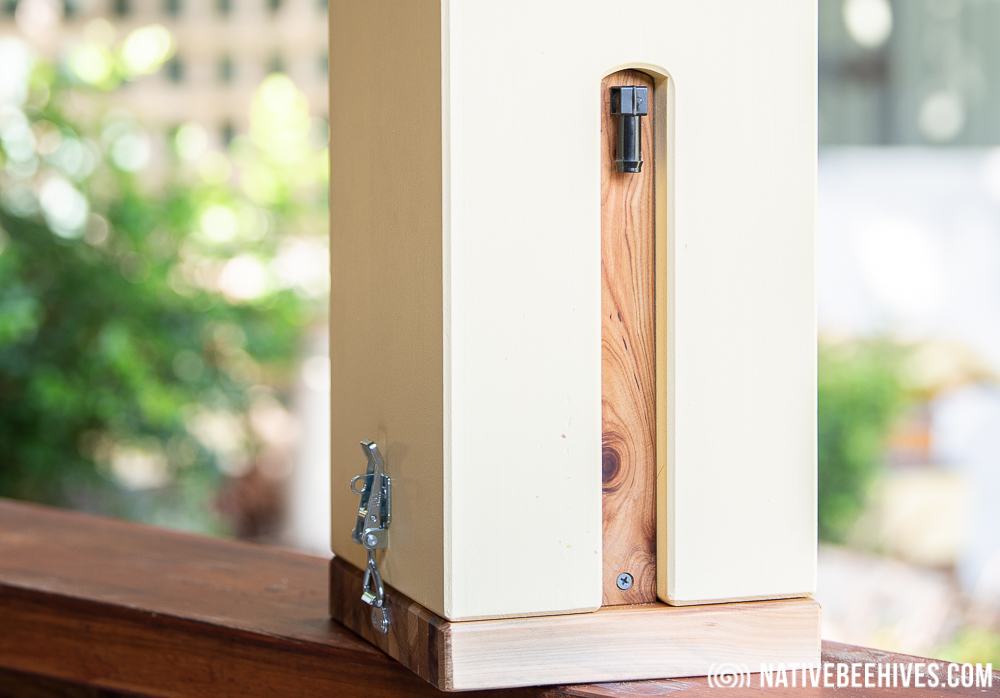
I’ve tried to keep the design as simple as possible and i think it should work well, look great and be re-usable for many years. The Cypress has been finished with Tung Oil so should be easy to maintain over the years.
Thanks to Brian for coming up with this idea! Hopefully we can get some update photos from Brian as the bees build their colony.

Below: A second box…
This is another box made to the same design. The difference here is the outside removable cover has two doors for easy quick viewing. The photo below shows the observation hour glass hive in pieces. This can be pulled apart easily and assembled easily.
